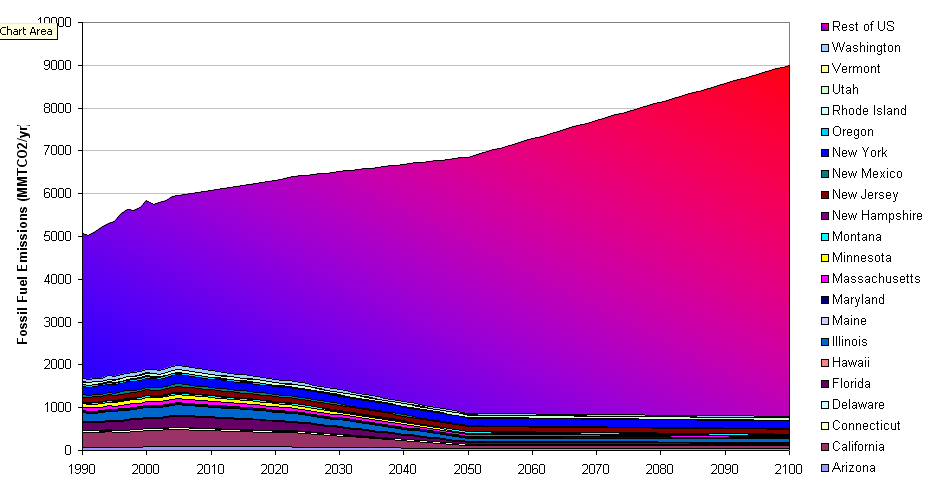For the Pangaea model, colleagues have been compiling a useful table of international emissions commitments. That will let us test whether, if fulfilled, those commitments move the needle on global atmospheric GHG concentrations and temperatures (currently they don’t).
I’ve been looking for the equivalent for US states, and found it at Pew Climate. It’s hard to get a mental picture of the emissions trajectory implied by the various commitments in the table, so I combined them with emissions data from EPA (fossil fuel CO2 only) to reconcile all the variations in base years and growth patterns.
The history of emissions from 1990 to 2005, plus future commitments, looks like this:
Note that some states have committed to “long term” reductions, without a specific date, which are shown above just beyond 2050. There’s a remarkable amount of variation in 1990-2005 trends, ranging from Arizona (up 55%) to Massachusetts (nearly flat).
Next, the emissions picture resulting from those commitments:
I’ve made a few assumptions: between commitment points, emissions follow a linear path; “long term” commitments are assigned to 2100; states make no further reductions after their last stated commitment. Combined, those get you to about half of 1990 emissions – not enough to meet aggressive stabilization targets, but a good start (and of course subject to adaptation).
The real key is how far the idea spreads. If the rest of the US sticks to a BAU trajectory (shown here as a linear extrapolation of 1990-2005 emissions growth, ignoring the Bush target of a reversal in 2025), the states with current emissions commitments can’t turn things around by themselves:




Tom,
That looks like a really scary future (if BAU – Business As Usual stays at play for longer);-(
Otto Scharmer’s newest blog entry shows the shift that is possible:
http://www.blog.ottoscharmer.com/?p=50
Cheers,
Ralf